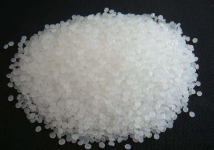read: 1187 time:2025-07-14 20:43:56 from:化易天下
When dealing with chemicals and various materials in the chemical industry, it's crucial to understand how they interact with each other. One common question that arises is: Will acetone damage anodized aluminum? This is an important consideration for professionals working with both anodized aluminum and acetone in various applications, such as cleaning or surface preparation. In this article, we’ll explore this question in detail, covering the properties of both acetone and anodized aluminum, and how they interact.
Anodized aluminum is a type of aluminum that has undergone an electrolytic process to increase the thickness of its natural oxide layer. This process enhances the material’s resistance to corrosion, wear, and provides an excellent base for dyeing and sealing. Anodizing transforms the surface of the aluminum into a durable, long-lasting, and aesthetically pleasing finish that is widely used in various industries, including aerospace, automotive, and consumer electronics.
The anodizing process increases the thickness of the oxide layer on the aluminum surface, making it more resistant to environmental factors. However, despite its durability, the anodized layer is still susceptible to damage from harsh chemicals, which brings us to the central question: Will acetone damage anodized aluminum?
Acetone, a solvent commonly used in industrial and laboratory settings, is known for its excellent ability to dissolve organic materials, such as oils, greases, and resins. It is a volatile, colorless liquid that evaporates quickly, leaving minimal residue. Due to its strong solvency power, acetone is often used for cleaning surfaces, preparing them for further processing, or removing stubborn contaminants.
Given acetone's powerful solvent properties, it's natural to wonder how it interacts with anodized aluminum. Does it pose a risk to the integrity of the anodized layer, or is it safe for use on anodized surfaces?
When considering whether acetone will damage anodized aluminum, it’s important to note that anodized aluminum has a high level of chemical resistance due to the thick oxide layer. This layer protects the aluminum from many chemicals, including acetone. Generally, acetone does not react aggressively with the anodized surface. It can be safely used to clean anodized aluminum without causing damage to the protective oxide layer.
However, this is true under normal conditions. If the anodized layer has imperfections, such as cracks or incomplete sealing, acetone could potentially penetrate these weak spots, leading to localized damage or discoloration. Therefore, it is essential to inspect the anodized surface for any defects before using acetone.
To ensure that acetone does not damage anodized aluminum, follow these best practices:
Surface Inspection: Before applying acetone, carefully inspect the anodized aluminum surface for any signs of damage, such as cracks, chips, or discoloration. If the surface is compromised, avoid using acetone or perform a patch test on a small area.
Application Method: When using acetone, apply it sparingly with a clean cloth or swab. Avoid prolonged exposure by wiping the surface and allowing it to dry quickly. This minimizes the chance of acetone seeping into any potential weak spots in the anodized layer.
Post-Cleaning Care: After using acetone, rinse the anodized aluminum with clean water to remove any residual solvent. This ensures that no acetone remains on the surface, reducing the risk of any long-term effects.
In conclusion, the answer to the question, "Will acetone damage anodized aluminum?" is generally no, under normal conditions. Anodized aluminum’s chemically resistant oxide layer protects it from the solvent action of acetone. However, care should be taken to ensure the anodized surface is free of defects, and proper application techniques should be followed to avoid any potential issues. By adhering to these guidelines, acetone can be used effectively for cleaning and preparing anodized aluminum surfaces without causing damage.

Jincheng Petrochemical's 300000 ton polypropylene plant successfully trial production, 2024 polypropylene market analysis

The ABS market remains sluggish, what is the future direction?

Market differentiation of bisphenol A intensifies: prices rise in East China, while prices generally decline in other regions

The production method and process flow of silicone acrylic lotion, and what are the common raw materials